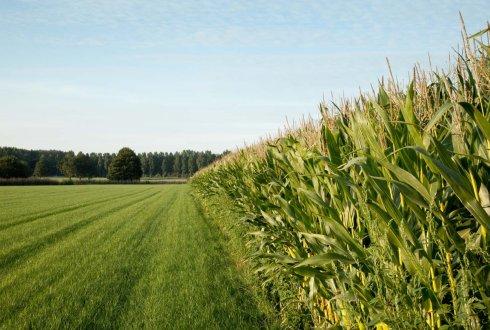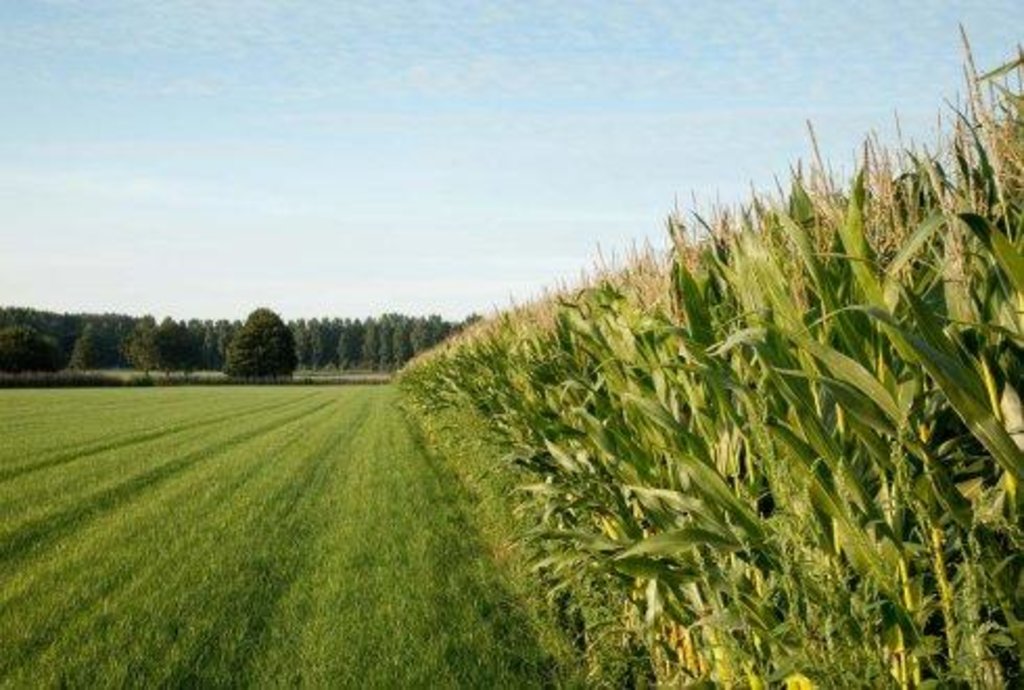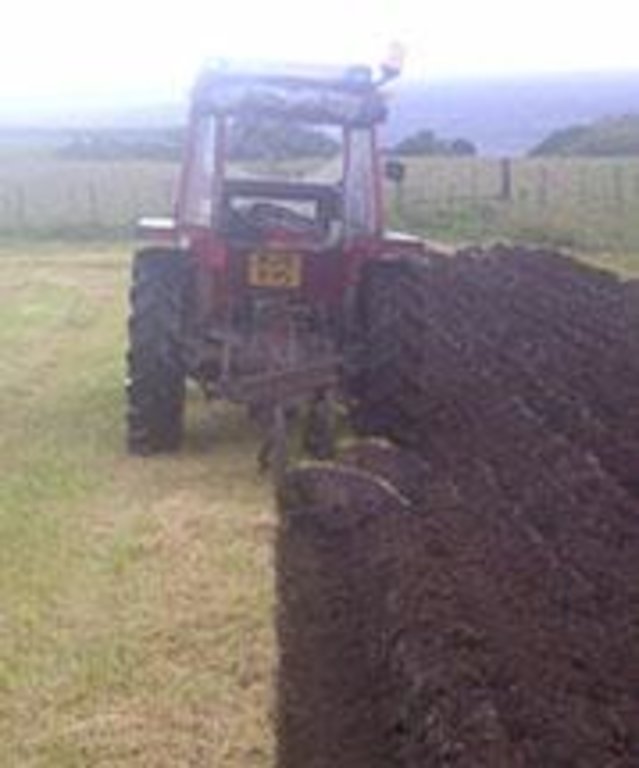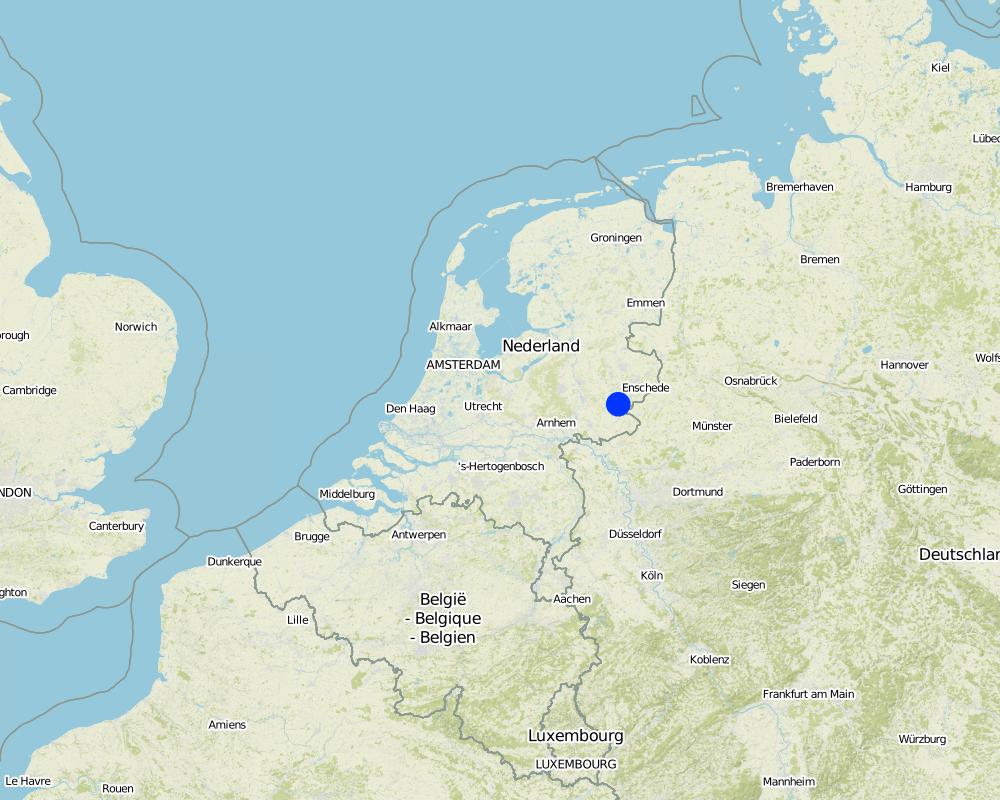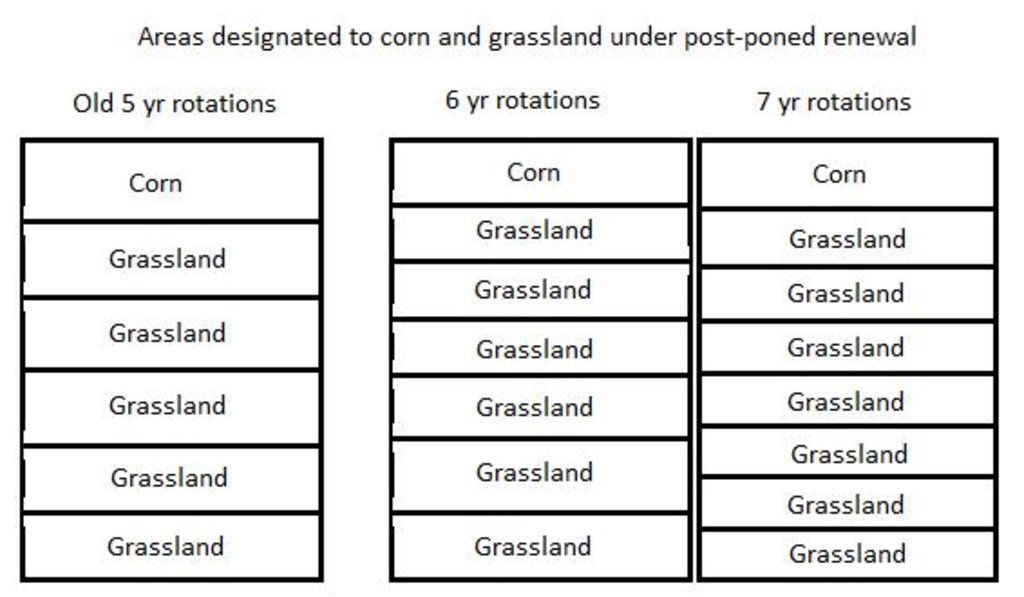Postpone grassland renewal [เนเธอร์แลนด์]
- ผู้สร้างสรรค์:
- การอัพเดท:
- ผู้รวบรวม: Jason Stuka
- ผู้เรียบเรียง: –
- ผู้ตรวจสอบ: Fabian Ottiger, Alexandra Gavilano
Uitstellen van graslandvernieuwing
technologies_1662 - เนเธอร์แลนด์
ดูส่วนย่อย
ขยายทั้งหมด ย่อทั้งหมด1. ข้อมูลทั่วไป
1.2 รายละเอียดที่ติดต่อได้ของผู้รวบรวมและองค์กรที่เกี่ยวข้องในการประเมินและการจัดเตรียมทำเอกสารของเทคโนโลยี
ผู้เชี่ยวชาญ SLM:
Smit Annemieke
Wageningen Environmental Research (Alterra)
เนเธอร์แลนด์
ผู้เชี่ยวชาญ SLM:
Rienks Willem
Rom3D
เนเธอร์แลนด์
ผู้เชี่ยวชาญ SLM:
Leever Henk
Hoeduurzaam
เนเธอร์แลนด์
ชื่อของโครงการซึ่งอำนวยความสะดวกในการทำเอกสารหรือการประเมินเทคโนโลยี (ถ้าเกี่ยวข้อง)
Preventing and Remediating degradation of soils in Europe through Land Care (EU-RECARE )ชื่อขององค์กรซึ่งอำนวยความสะดวกในการทำเอกสารหรือการประเมินเทคโนโลยี (ถ้าเกี่ยวข้อง)
Hoe Duurzaam - เนเธอร์แลนด์ชื่อขององค์กรซึ่งอำนวยความสะดวกในการทำเอกสารหรือการประเมินเทคโนโลยี (ถ้าเกี่ยวข้อง)
Wageningen Environmental Research (Alterra) - เนเธอร์แลนด์ชื่อขององค์กรซึ่งอำนวยความสะดวกในการทำเอกสารหรือการประเมินเทคโนโลยี (ถ้าเกี่ยวข้อง)
Vitens - Laat Water Voor Je Werken - เนเธอร์แลนด์ชื่อขององค์กรซึ่งอำนวยความสะดวกในการทำเอกสารหรือการประเมินเทคโนโลยี (ถ้าเกี่ยวข้อง)
Ministerie van Economische Zaken - เนเธอร์แลนด์ชื่อขององค์กรซึ่งอำนวยความสะดวกในการทำเอกสารหรือการประเมินเทคโนโลยี (ถ้าเกี่ยวข้อง)
Gemeente Berkelland - เนเธอร์แลนด์1.3 เงื่อนไขการใช้ข้อมูลที่ได้บันทึกผ่านทาง WOCAT
ผู้รวบรวมและวิทยากรหลักยอมรับเงื่อนไขเกี่ยวกับการใช้ข้อมูลที่ถูกบันทึกผ่านทาง WOCAT:
ใช่
1.5 Reference to Questionnaire(s) on SLM Approaches (documented using WOCAT)
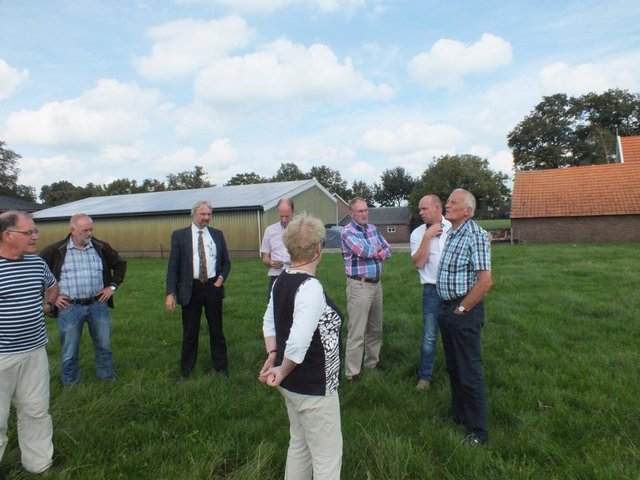
Regional process, social innovation [เนเธอร์แลนด์]
Social innovation for sustained soil organic matter, clean drinking water and sustainable crop production
- ผู้รวบรวม: Simone Verzandvoort
2. การอธิบายลักษณะของเทคโนโลยี SLM
2.1 การอธิบายแบบสั้น ๆ ของเทคโนโลยี
คำจำกัดความของเทคโนโลยี:
Postponing the timing of ploughing a grassland field by one or two years to reduce nutrient losses and organic matter decomposition.
2.2 การอธิบายแบบละเอียดของเทคโนโลยี
คำอธิบาย:
On the sandy soils in this part of The Netherlands permanent grassland seems the best measure to increase the organic matter content of the soil, to reduce the leaching of minerals and to reduce loss of soil moisture.
Customary maintenance of grassland fields is to plough and reseed or rotate the grass every 5 years. 5 years is the minimum length of time required by legislation. For growth and field rotation purposes, many farmers have preference to rotate fields in intervals less than 5 years. Under this technology, farmers instead wait 6 or 7 years before ploughing.
Purpose of the Technology: Ploughing grasslands increases the breakdown and decomposition of organic matter in soils. Farmers post-pone ploughing to increase soil organic matter content and reduce losses.
Establishment / maintenance activities and inputs: A well established permanent grassland requires good drainage, frequent liming (possibly from residual products from water purification), deep rooting grass, reseeding after 10-15 years, and fertilisation using sufficient organic manure.
Natural / human environment: Dairy farmers on sandy soils in the eastern part of The Netherlands. In the pilot Gezond Zand 44 farmers participated, owning 720 ha agricultural land, of which 344 in use as permanent grassland.
2.3 รูปภาพของเทคโนโลยี
2.5 ประเทศภูมิภาค หรือสถานที่ตั้งที่เทคโนโลยีได้นำไปใช้และได้รับการครอบคลุมโดยการประเมินนี้
ประเทศ:
เนเธอร์แลนด์
ภูมิภาค/รัฐ/จังหวัด:
Gelderland
ข้อมูลจำเพาะเพิ่มเติมของสถานที่ตั้ง :
Haarlo - Oude Eibergen
ระบุการกระจายตัวของเทคโนโลยี:
- กระจายไปอย่างสม่ำเสมอในพื้นที่
If precise area is not known, indicate approximate area covered:
- 1-10 ตร.กม.
แสดงความคิดเห็น:
In entire area there is 344 ha of grassland owned by 44 farmers. Only 2 of those farmers implemented the technology.
Map
×2.6 วันที่การดำเนินการ
ถ้าไม่รู้ปีที่แน่นอน ให้ระบุวันที่โดยประมาณ:
- 10-50 ปี
2.7 คำแนะนำของเทคโนโลยี
ให้ระบุว่าเทคโนโลยีถูกแนะนำเข้ามาอย่างไร:
- ทางโครงการหรือจากภายนอก
3. การจัดประเภทของเทคโนโลยี SLM
3.2 ประเภทของการใช้ที่ดินในปัจจุบันที่ได้นำเทคโนโลยีไปใช้

ทุ่งหญ้าเลี้ยงสัตว์
Extensive grazing:
- การทำฟาร์มปศุสัตว์ (Ranching)
ทุ่งหญ้าเลี้ยงสัตว์ที่มีการจัดการแบบเข้มข้นหรือการผลิตอาหารสัตว์:
- ตัดแล้วขนไป / ไม่มีการปล่อยแทะเล็มเอง (Cut-and-carry / zero grazing)
- ทุ่งหญ้าเลี้ยงสัตว์ที่ได้มีการปรับปรุง (Improved pastures)
แสดงความคิดเห็น:
Major land use problems (compiler’s opinion): Decrease of soil organic matter content.
Major land use problems (land users’ perception): The group of farmers in the area experience decreasing organic matter content in soil.
Ranching: Yes
Cut-and-carry/ zero grazing: farmers also keep cattle in stable to prevent unequal grazing and dispersed manuring
Improved pasture: Yes
Number of growing seasons per year: 1
Longest growing period in days: 250 Longest growing period from month to month: March - November
Livestock density: > 100 LU /km2
3.4 การใช้น้ำ
การใช้น้ำของที่ดินที่มีการใช้เทคโนโลยีอยู่:
- จากน้ำฝน
3.5 กลุ่ม SLM ที่ตรงกับเทคโนโลยีนี้
- การรบกวนดินให้น้อยที่สุด
3.6 มาตรการ SLM ที่ประกอบกันเป็นเทคโนโลยี

มาตรการอนุรักษ์ด้วยการจัดการ
- M2: การเปลี่ยนแปลงของการจัดการหรือระดับความเข้มข้น
แสดงความคิดเห็น:
Main measures: management measures
3.7 รูปแบบหลักของการเสื่อมโทรมของที่ดินที่ได้รับการแก้ไขโดยเทคโนโลยี

การเสื่อมโทรมของดินทางด้านเคมี
- Cn (Fertility decline): ความอุดมสมบูรณ์และปริมาณอินทรียวัตถุในดินถูกทำให้ลดลงไป (ไม่ได้เกิดจากสาเหตุการกัดกร่อน)
แสดงความคิดเห็น:
Main type of degradation addressed: Cn: fertility decline and reduced organic matter content
Main causes of degradation: soil management (ploughing intensive grassland renewal)
Secondary causes of degradation: crop management (annual, perennial, tree/shrub) (rotation with more corn and less grassland)
3.8 การป้องกัน การลดลง หรือการฟื้นฟูความเสื่อมโทรมของที่ดิน
ระบุเป้าหมายของเทคโนโลยีกับความเสื่อมโทรมของที่ดิน:
- ลดความเสื่อมโทรมของดิน
แสดงความคิดเห็น:
Main goals: mitigation / reduction of land degradation
4. ข้อมูลจำเพาะด้านเทคนิค กิจกรรมการนำไปปฏิบัติใช้ ปัจจัยนำเข้า และค่าใช้จ่าย
4.1 แบบแปลนทางเทคนิคของเทคโนโลยี
ข้อมูลจำเพาะด้านเทคนิค (แบบแปลนทางเทคนิคของเทคโนโลยี):
Demonstrating area designated to corn and designated to grassland under old management of renewing grasslands every 5 years and comparing to the area under the new technology of renewal every 6 or 7 years.
Location: Wageningen. Gelderland
Date: March 20, 2015
Technical knowledge required for field staff / advisors: moderate (knowledge is required on the maintenance of permanent grassland, the proportion of grassland in the total farm, the frequency of reseeding and rotations with arable crops, in particular for grassland)
Technical knowledge required for land users: moderate (knowledge is required on the maintenance of permanent grassland, the proportion of grassland in the total farm, the frequency of reseeding and rotations with arable crops, in particular for grassland)
Main technical functions: Reduce decomposition of organic matter
Secondary technical functions: increase in organic matter, increase of biomass (quantity)
Change of land use practices / intensity level: Plough grassland every 6 to 7 years instead of every 5 years.
Major change in timing of activities: Plough grassland every 6 to 7 years instead of every 5 years.
ผู้เขียน:
Jason Stuka, Wageningen University
4.6 ค่าใช้จ่ายของปัจจัยนำเข้าและกิจกรรมที่เกิดขึ้นเป็นประจำที่ต้องการการบำรุงรักษา (ต่อปี)
แสดงความคิดเห็น:
Information on costs for the technology are not yet available, and therefore no information on costs was entered into section 2.6.
Costs involved with postponing grassland renewal include the costs of yield foregone from rotations with arable crops that have not taken place, and costs of manuring of the grassland.
Costs avoided include all costs of management operations and inputs associted with rotations of grassland and arable crops that would have taken place in the life cycle of the permanent grassland (6-7 till 15 years).
Benefits include 1320 kg of additional DM/ha, or € 145,-/ha additional revenues.
4.7 ปัจจัยสำคัญที่สุดที่มีผลกระทบต่อค่าใช้จ่าย
ปัจจัยสำคัญที่สุดที่มีผลกระทบต่อค่าใช้จ่ายต่างๆ:
The life cycle of permanent grassland determines both the costs foregone due to missed yields from shorter term rotations with arable crops and costs avoided due to saved operations and inputs on shorter term rotations which have not taken place.
5. สิ่งแวดล้อมทางธรรมชาติและของมนุษย์
5.1 ภูมิอากาศ
ฝนประจำปี
- < 250 ม.ม.
- 251-500 ม.ม.
- 501-750 ม.ม.
- 751-1,000 ม.ม.
- 1,001-1,500 ม.ม.
- 1,501-2,000 ม.ม.
- 2,001-3,000 ม.ม.
- 3,001-4,000 ม.ม.
- > 4,000 ม.ม.
ข้อมูลจำเพาะ/ความคิดเห็นเรื่องปริมาณน้ำฝน:
182 days of precipitation annually
เขตภูมิอากาศเกษตร
- กึ่งชุ่มชื้น
Thermal climate class: temperate. Mean monthly temperatures vary between 2-17 °C (LGP 240-269 days, mean monthly temperatures vary between 2-17 °C)
5.2 สภาพภูมิประเทศ
ค่าเฉลี่ยความลาดชัน:
- ราบเรียบ (0-2%)
- ลาดที่ไม่ชัน (3-5%)
- ปานกลาง (6-10%)
- เป็นลูกคลื่น (11-15%)
- เป็นเนิน (16-30%)
- ชัน (31-60%)
- ชันมาก (>60%)
ธรณีสัณฐาน:
- ที่ราบสูง/ที่ราบ
- สันเขา
- ไหล่เขา
- ไหล่เนินเขา
- ตีนเนิน
- หุบเขา
ระดับความสูง:
- 0-100 เมตร
- 101-500 เมตร
- 501-1,000 เมตร
- 1,001-1,500 เมตร
- 1,501-2,000 เมตร
- 2,001-2,500 เมตร
- 2,501-3,000 เมตร
- 3,001-4,000 เมตร
- > 4,000 เมตร
ความคิดเห็นและข้อมูลจำเพาะเพิ่มเติมเรื่องสภาพภูมิประเทศ:
Altitudinal zone: 0-100 m a.s.l. (up to 45 metres a.s.l.)
Slopes on average: Gentle (only incidentally)
5.3 ดิน
ค่าเฉลี่ยความลึกของดิน:
- ตื้นมาก (0-20 ซ.ม.)
- ตื้น (21-50 ซ.ม.)
- ลึกปานกลาง (51-80 ซ.ม.)
- ลึก (81-120 ซ.ม.)
- ลึกมาก (>120 ซ.ม.)
เนื้อดิน (ดินชั้นบน):
- หยาบ/เบา (ดินทราย)
- ปานกลาง (ดินร่วน ทรายแป้ง)
อินทรียวัตถุในดิน:
- สูง (>3%)
- ปานกลาง (1-3%)
(ถ้ามี) ให้แนบคำอธิบายเรื่องดินแบบเต็มหรือระบุข้อมูลที่มีอยู่ เช่น ชนิดของดิน ค่า pH ของดินหรือความเป็นกรดของดิน ความสามารถในการแลกเปลี่ยนประจุบวก ไนโตรเจน ความเค็ม เป็นต้น:
Soil depth on average: Deep (A en B horizons up till 40 cm in Gleyic Podzols and Umbric Gleysols (ca 75% of the area). Hardly any soil organic matter below 15 cm. Rooting depth is up to 80 cm.) and very deep (deep topsoils rich in organic matter in Fimic Anthrosols (12% of the area))
Soil texture: Coarse/light ( Most soils have a sandy texture due to the substrate consisting of cover sands) and medium (soils in former creek valleys contain loam (Umbric Gleysols))
Soil fertility is low (most soils have a low fertility due to the sandy substrate (specifically the Gleyic Podzols, ca 40% of the area). and very high (fimic Anthrosols originating from application of farmyard manure since medieval times.)
Topsoil organic matter is medium (The purpose of the pilot project is to increase soil organic matter)
Soil drainage/infiltration is good (deep ground water. Sandy soils.) and medium (some shallow groundwater)
Soil water storage capacity is medium (dependent on soil organic matter content)
5.4 ความเป็นประโยชน์และคุณภาพของน้ำ
ระดับน้ำใต้ดิน:
5-50 เมตร
น้ำไหลบ่าที่ผิวดิน:
ปานกลาง
คุณภาพน้ำ (ที่ยังไม่ได้บำบัด):
เป็นน้ำเพื่อการดื่มที่ไม่ดี (จำเป็นต้องได้รับการบำบัด)
5.5 ความหลากหลายทางชีวภาพ
ความหลากหลายทางชนิดพันธุ์:
- ปานกลาง
5.6 ลักษณะของผู้ใช้ที่ดินที่นำเทคโนโลยีไปปฏิบัติใช้
แนวทางการตลาดของระบบการผลิต:
- เพื่อการยังชีพ (หาเลี้ยงตนเอง)
รายได้ที่มาจากนอกฟาร์ม:
- < 10% ของรายได้ทั้งหมด
ระดับของความมั่งคั่งโดยเปรียบเทียบ:
- พอมีพอกิน
เป็นรายบุคคล/ครัวเรือน:
- เป็นรายบุคคล/ครัวเรือน
เพศ:
- ชาย
ระบุลักษณะอื่นๆที่เกี่ยวข้องของผู้ใช้ที่ดิน:
Land users applying the Technology are mainly common / average land users
Difference in the involvement of women and men: Most outdoor farm operations are completed by men.
Population density: 10-50 persons/km2
Annual population growth: < 0.5%
100% of the land users are average wealthy and own 100% of the land.
Off-farm income specification: Some farmers are contractual workers. Wives of farmers often have a job, e.g. at the municipality or craft work. No B&B activities or educational services.
Market orientation is subsistence (grass is used to feed the cattle of dairy farmers, not sold)
5.7 Average area of land used by land users applying the Technology
- < 0.5 เฮกตาร์
- 0.5-1 เฮกตาร์
- 1-2 เฮกตาร์
- 2-5 เฮกตาร์
- 5-15 เฮกตาร์
- 15-50 เฮกตาร์
- 50-100 เฮกตาร์
- 100-500 เฮกตาร์
- 500-1,000 เฮกตาร์
- 1,000-10,000 เฮกตาร์
- >10,000 เฮกตาร์
พิจารณาว่าเป็นขนาดเล็ก กลาง หรือขนาดใหญ่ (ซึ่งอ้างอิงถึงบริบทระดับท้องถิ่น):
- ขนาดกลาง
แสดงความคิดเห็น:
Average grassland is 7.8 ha per household.
5.8 กรรมสิทธิ์ในที่ดิน สิทธิในการใช้ที่ดินและสิทธิในการใช้น้ำ
กรรมสิทธิ์ในที่ดิน:
- รายบุคคล ได้รับสิทธิครอบครอง
สิทธิในการใช้ที่ดิน:
- เช่า
- รายบุคคล
แสดงความคิดเห็น:
All agriculture land is owned by farmers. Some farmers lease their land to other farmers. There are some regulations on land uses set by communities.
5.9 การเข้าถึงบริการและโครงสร้างพื้นฐาน
สุขภาพ:
- จน
- ปานกลาง
- ดี
การศึกษา:
- จน
- ปานกลาง
- ดี
ความช่วยเหลือทางด้านเทคนิค:
- จน
- ปานกลาง
- ดี
การจ้างงาน (เช่น ภายนอกฟาร์ม):
- จน
- ปานกลาง
- ดี
ตลาด:
- จน
- ปานกลาง
- ดี
พลังงาน:
- จน
- ปานกลาง
- ดี
ถนนและการขนส่ง:
- จน
- ปานกลาง
- ดี
น้ำดื่มและการสุขาภิบาล:
- จน
- ปานกลาง
- ดี
บริการด้านการเงิน:
- จน
- ปานกลาง
- ดี
6. ผลกระทบและสรุปคำบอกกล่าว
6.1 ผลกระทบในพื้นที่ดำเนินการ (On-site) จากการใช้เทคโนโลยี
ผลกระทบทางด้านเศรษฐกิจและสังคม
การผลิต
การผลิตพืชที่ใช้เลี้ยงปศุสัตว์
แสดงความคิดเห็น/ระบุ:
Expected. More grass, less corn. Overall less yield.
รายได้และค่าใช้จ่าย
ค่าใช่จ่ายของปัจจัยการผลิตทางการเกษตร
แสดงความคิดเห็น/ระบุ:
Expected. Not proven.
รายได้จากฟาร์ม
แสดงความคิดเห็น/ระบุ:
Uncertain. More grass but less corn.
ภาระงาน
แสดงความคิดเห็น/ระบุ:
Expected. Not proven.
Less rotation and management flexibility.
ผลกระทบด้านสังคมวัฒนธรรมอื่น ๆ
สถาบันของชุมชน
แสดงความคิดเห็น/ระบุ:
Created farmer's foundation
SLM หรือความรู้เรื่องความเสื่อมโทรมของที่ดิน
แสดงความคิดเห็น/ระบุ:
Farmers understanding ecological impacts.
การบรรเทาความขัดแย้ง
แสดงความคิดเห็น/ระบุ:
Farmers collaborating with water company
Improved livelihoods and human well-being
แสดงความคิดเห็น/ระบุ:
Dairy farmers have learned more about the importance of soil organic matter for their production systems, and about the consequences of soil management on soil organic matter and other aspects of soil health. This learning was brought by the exchange of knowledge between farmers and experts, and between farmers themselves. Farmers also profited from services provided to them by the farmers' foundations: shared investments (e.g. in the manure separator) and support in the application for subsidies to finance the SLM measure.
ผลกระทบด้านนิเวศวิทยา
วัฐจักรน้ำหรือน้ำบ่า
คุณภาพน้ำ
แสดงความคิดเห็น/ระบุ:
Expected. Not proven yet.
น้ำไหลบ่าที่ผิวดิน
แสดงความคิดเห็น/ระบุ:
Expected. Not proven yet. Little to no
การระบายน้ำส่วนเกิน
แสดงความคิดเห็น/ระบุ:
Expected. Not proven yet.
ดิน
สิ่งปกคลุมดิน
แสดงความคิดเห็น/ระบุ:
Not measured.
การอัดแน่นของดิน
แสดงความคิดเห็น/ระบุ:
Expected. Not proven yet.
การหมุนเวียนและการเติมของธาตุอาหาร
แสดงความคิดเห็น/ระบุ:
Expected. Not proven yet.
อินทรียวัตถุในดิน/ต่ำกว่าดินชั้น C
แสดงความคิดเห็น/ระบุ:
Expected. Not proven yet.
ความหลากหลายทางชีวภาพของพืชและสัตว์
มวลชีวภาพ/เหนือดินชั้น C
แสดงความคิดเห็น/ระบุ:
Not measured.
ลดความเสี่ยงของภัยพิบัติ
การปล่อยคาร์บอนและก๊าซเรือนกระจก
6.2 ผลกระทบนอกพื้นที่ดำเนินการ (Off-site) จากการใช้เทคโนโลยี
ความสามารถต้านทานการเปลี่ยนแปลง / ความสามารถในการคัดกรอง
แสดงความคิดเห็น/ระบุ:
Expected. Not proven yet.
6.3 การเผชิญและความตอบสนองของเทคโนโลยีต่อการเปลี่ยนแปลงสภาพภูมิอากาศที่ค่อยเป็นค่อยไป และสภาพรุนแรงของภูมิอากาศ / ภัยพิบัติ (ที่รับรู้ได้โดยผู้ใช้ที่ดิน)
การเปลี่ยนแปลงสภาพภูมิอากาศที่ค่อยเป็นค่อยไป
การเปลี่ยนแปลงสภาพภูมิอากาศที่ค่อยเป็นค่อยไป
| ฤดู | increase or decrease | เทคโนโลยีมีวิธีการรับมืออย่างไร | |
|---|---|---|---|
| อุณหภูมิประจำปี | เพิ่มขึ้น | ดี |
สภาพรุนแรงของภูมิอากาศ (ภัยพิบัติ)
ภัยพิบัติทางอุตุนิยมวิทยา
| เทคโนโลยีมีวิธีการรับมืออย่างไร | |
|---|---|
| พายุฝนประจำท้องถิ่น | ดี |
| พายุลมประจำท้องถิ่น | ดี |
ภัยพิบัติจากสภาพภูมิอากาศ
| เทคโนโลยีมีวิธีการรับมืออย่างไร | |
|---|---|
| ภัยจากฝนแล้ง | ดี |
ภัยพิบัติจากน้ำ
| เทคโนโลยีมีวิธีการรับมืออย่างไร | |
|---|---|
| น้ำท่วมตามปกติ (แม่น้ำ) | ดี |
ผลลัพธ์ตามมาที่เกี่ยวข้องกับภูมิอากาศอื่น ๆ
ผลลัพธ์ตามมาที่เกี่ยวข้องกับภูมิอากาศอื่น ๆ
| เทคโนโลยีมีวิธีการรับมืออย่างไร | |
|---|---|
| ช่วงการปลูกพืชที่ลดลงมา | ดี |
6.4 การวิเคราะห์ค่าใช้จ่ายและผลประโยชน์ที่ได้รับ
ผลประโยชน์ที่ได้รับเปรียบเทียบกับค่าใช้จ่ายในการบำรุงรักษาหรือต้นทุนที่เกิดขึ้นซ้ำอีก เป็นอย่างไร (จากมุมมองของผู้ใช้ที่ดิน)
ผลตอบแทนระยะสั้น:
เป็นกลางหรือสมดุล
ผลตอบแทนระยะยาว:
ด้านลบเล็กน้อย
แสดงความคิดเห็น:
Less frequent rotation and fertility for corn production, but better for soil health.
6.5 การปรับตัวของเทคโนโลยี
แสดงความคิดเห็น:
100% of land user families have adopted the Technology with external material support
2 land user families have adopted the Technology with external material support
6.7 จุดแข็ง / ข้อได้เปรียบ / โอกาสของเทคโนโลยี
| จุดแข็ง / ข้อได้เปรียบ / โอกาสในทัศนคติของผู้ใช้ที่ดิน |
|---|
|
increases soil organic matter How can they be sustained / enhanced? continued implementation of the measures and subsidy or payment for environmental service to compensate foregone revenues if rotations with arabale crops would be inserted. |
|
increases grassland quality and yield in the long term; estimated added value of postponing grassland renewal is € 145,-/ha How can they be sustained / enhanced? continued implementation of the measure, preferably maintain life cycles of 10-15 year for permanent grassland |
|
reduces leaching of nutrients, herbicides and pesticides to the groundwater How can they be sustained / enhanced? financial support from the drinking water company Vitens, who has interest in reduced influx of substances to the groundwater. |
| จุดแข็ง / ข้อได้เปรียบ / โอกาสในทัศนคติของผู้รวบรวมหรือวิทยากรหลัก |
|---|
|
increases soil organic matter How can they be sustained / enhanced? continued implementation of the measures and subsidy or payment for environmental service to compensate foregone revenues if rotations with arabale crops would be inserted. |
| increases available soil moisture |
|
reduces leaching of nutrients, herbicides and pesticides to the groundwater How can they be sustained / enhanced? financial support from the drinking water company Vitens, who has interest in reduced influx of substances to the groundwater. |
6.8 จุดอ่อน / ข้อเสียเปรียบ / ความเสี่ยงของเทคโนโลยีและวิธีการแก้ไข
| จุดอ่อน / ข้อเสียเปรียบ / ความเสี่ยงในทัศนคติของผู้ใช้ที่ดิน | มีวิธีการแก้ไขได้อย่างไร |
|---|---|
| long-term investment, requires time to return improved grassland yield |
| จุดอ่อน / ข้อเสียเปรียบ / ความเสี่ยงในทัศนคติของผู้รวบรวมหรือวิทยากรหลัก | มีวิธีการแก้ไขได้อย่างไร |
|---|---|
| long term permanent grassland prevents rotations with arable crops; this may reduce farmer's income | reward the benefits of increased SOM through subsidy or payment for environmental services by the drinking water and dairy companies |
7. การอ้างอิงและการเชื่อมต่อ
7.1 วิธีการและแหล่งข้อมูล
7.2 การอ้างอิงถึงสิ่งตีพิมพ์
หัวข้อ, ผู้เขียน, ปี, หมายเลข ISBN:
Gezond Zand: Met een verbeterde bodemkwaliteit naar een betere waterkwaliteit Haarloseveld en Olden Eibergen By Willem Rienks and Henk Leever 2014 Unravelling changes in soil fertility of agricultural land in The Netherlands Arjan Reijneveld 2013RECARE_WP3 Report: CS_11_Ouden-Eibergen_v2 Annemieke Smit and Simone Verzandvoort 2014
ชื่อเรื่อง ผู้เขียน ปี ISBN:
Free http://www.hoeduurzaam.nl/images/gallery/nieuws/Brochure/BrochureHoeduurzaam%20Definitief.pdfWageningen University Library http://library.wur.nl/WebQuery/wda/2044057Free annemieke.smit@wur.nl
7.3 Links to relevant online information
ชื่อเรื่องหรือคำอธิบาย:
Gezond Zand: Met een verbeterde bodemkwaliteit naar een betere waterkwaliteit Haarloseveld en Olden EibergenBy Willem Rienks and Henk Leever2014
URL:
http://www.hoeduurzaam.nl/images/gallery/nieuws/Brochure/BrochureHoeduurzaam%20Definitief.pdfWageningen University Library http://library.wur.nl/WebQuery/wda/2044057Free annemieke.smit@wur.nl
ลิงก์และโมดูล
ขยายทั้งหมด ย่อทั้งหมดลิงก์

Regional process, social innovation [เนเธอร์แลนด์]
Social innovation for sustained soil organic matter, clean drinking water and sustainable crop production
- ผู้รวบรวม: Simone Verzandvoort
โมดูล
ไม่มีโมดูล


